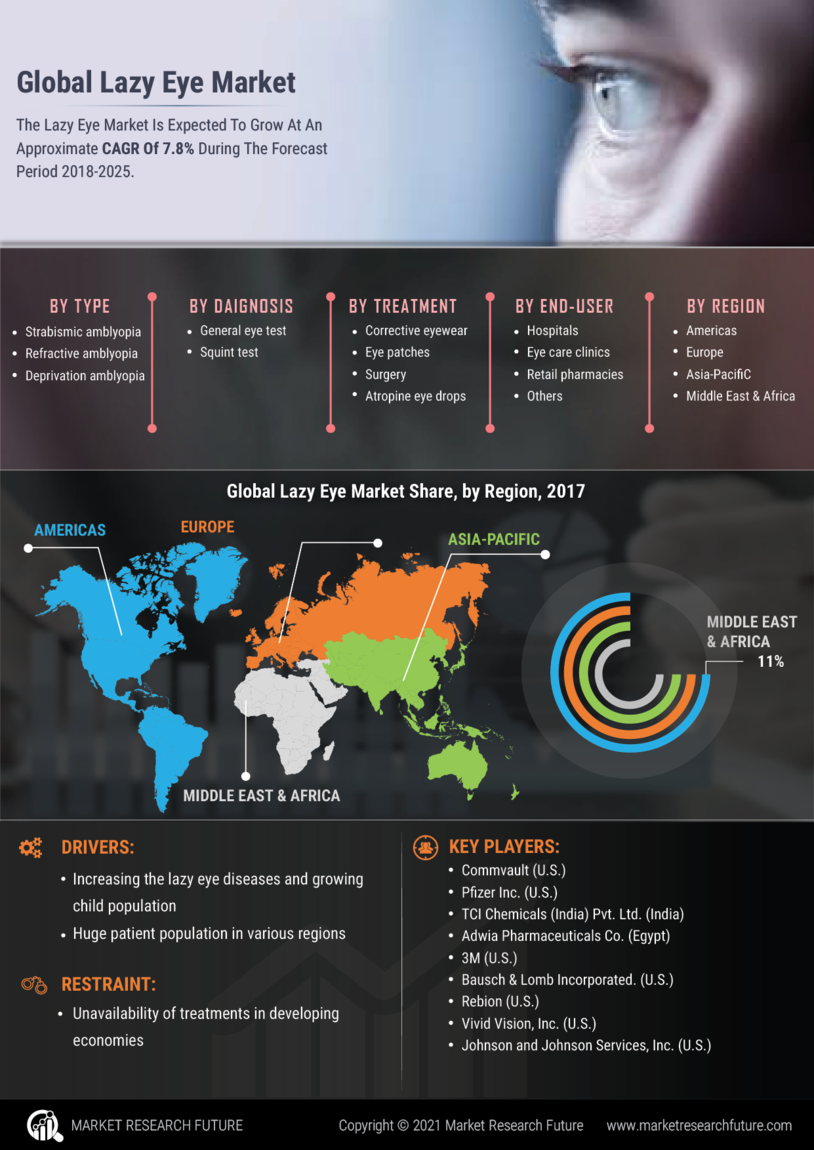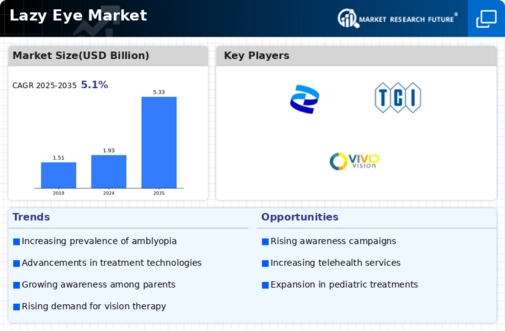Market Growth Projections
The Global Lazy Eye Market Industry is projected to experience substantial growth over the coming years. With a market value of 1.93 USD Billion in 2024, it is anticipated to reach 5.33 USD Billion by 2035. This represents a compound annual growth rate of 9.67% from 2025 to 2035. Such growth is indicative of the increasing recognition of amblyopia as a significant public health concern and the ongoing advancements in treatment options. The market dynamics suggest a robust future for lazy eye therapies, driven by a combination of factors including technological innovations, increased awareness, and supportive government policies.
Growing Geriatric Population
The aging population is another significant driver of the Global Lazy Eye Market Industry. As individuals age, the risk of developing various eye conditions, including amblyopia, increases. The geriatric demographic is becoming more aware of vision health and is actively seeking treatment options for visual impairments. This trend is expected to contribute to the market's expansion as healthcare providers adapt their services to meet the needs of older patients. The combination of an increasing elderly population and a growing emphasis on maintaining quality of life through vision correction is likely to enhance the demand for lazy eye treatments.
Government Support and Funding
Government support and funding for vision health initiatives are contributing to the growth of the Global Lazy Eye Market Industry. Various health departments are allocating resources to improve eye care services, particularly for children. This includes funding for screening programs and public health campaigns aimed at reducing the incidence of amblyopia. Such initiatives not only enhance access to care but also encourage research and development in treatment options. The increased investment in eye health is likely to stimulate market growth, as it fosters an environment conducive to innovation and improved patient outcomes.
Increasing Prevalence of Lazy Eye
The Global Lazy Eye Market Industry is experiencing growth due to the rising prevalence of amblyopia among children and adults. Statistics indicate that approximately 2 to 3 percent of the population is affected by this condition, which can lead to significant visual impairment if left untreated. As awareness of the condition increases, more individuals are seeking diagnosis and treatment options. This trend is likely to contribute to the market's expansion, with projections suggesting that the market will reach 1.93 USD Billion in 2024. The growing recognition of early intervention strategies is further driving demand for effective therapies and corrective measures.
Advancements in Treatment Technologies
Innovations in treatment technologies are playing a pivotal role in the Global Lazy Eye Market Industry. The development of advanced therapies, including vision therapy, pharmacological treatments, and surgical options, has enhanced the effectiveness of amblyopia management. For instance, the introduction of digital therapies and specialized eye patches has shown promising results in improving visual acuity in affected individuals. These advancements are expected to attract more patients seeking effective solutions, thereby propelling market growth. As the industry evolves, it is anticipated that the market will experience a compound annual growth rate of 9.67% from 2025 to 2035, reflecting the increasing adoption of these innovative treatments.
Rising Awareness and Education Initiatives
The Global Lazy Eye Market Industry is benefiting from heightened awareness and educational initiatives aimed at both healthcare professionals and the general public. Campaigns focused on the importance of early detection and treatment of amblyopia are becoming more prevalent. Organizations are actively promoting screening programs in schools and community health settings, which is likely to lead to earlier diagnoses and increased treatment uptake. This growing awareness is expected to drive market growth, as more individuals recognize the need for intervention. As a result, the market is projected to expand significantly, potentially reaching 5.33 USD Billion by 2035.













